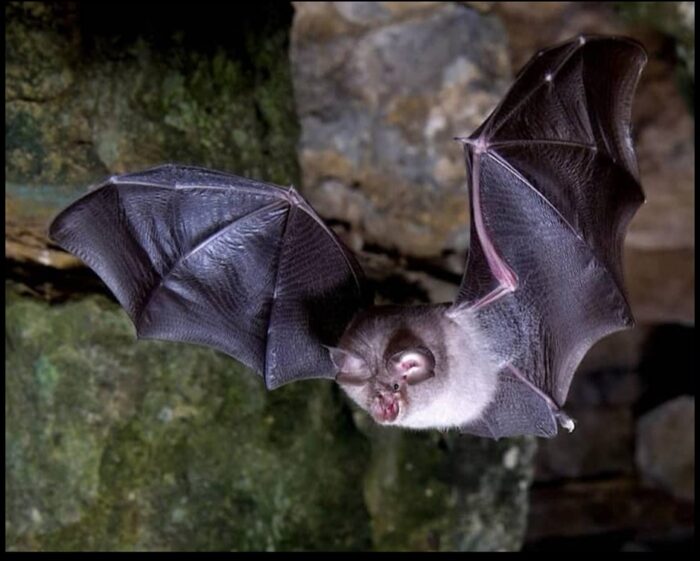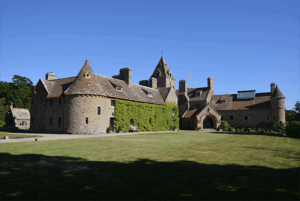
A community wildlife event invites Islanders to help monitor Jersey’s bats from gardens, balconies and beaches, 6–8 June.
The Jersey Bat Group, in partnership with the Jersey Biodiversity Centre, is delighted to announce the return of the Great Garden Bat Watch, taking place across the island from Friday 6th to Sunday 8th June 2025.
Now in its fourth year, the event combines public participation with scientific research, encouraging islanders to step outside after sunset to look and listen for bats in their local area. The data collected will help build a clearer picture of how bats use different habitats across Jersey — particularly in urban areas such as St Helier, where records remain sparse.
‘This is a fun, easy way for everyone to get involved in nature while supporting vital conservation work,’ said Hannah Le Morvan from the Jersey Bat Group. ‘You don’t need to be a scientist to take part — just spend an evening watching the skies, and you could be helping us protect the future of Jersey’s bats.’
What’s the purpose?
The Great Garden Bat Watch is a form of citizen science — collecting data from everyday observations to support professional research. By recording the time, direction, and location of bat sightings, participants help to map activity hotspots and gaps in data coverage.
This year, the Jersey Bat Group is particularly keen to receive sightings from built-up areas and places where bat surveys are less frequent. Urban records are essential for understanding how bat populations are adapting to changes in light levels, roost availability, and green space connectivity.
Submissions can be made through the Jersey Biodiversity Centre at:
https://www.jerseybiodiversitycentre.org.je/records/Great-Garden-Bat-Watch
Participants outside of the main weekend are welcome to take part at any time this summer. Those joining later are encouraged to check the sunset time for their location at www.timeanddate.com and begin their watch 15 minutes before sunset, continuing for at least an hour after.
What can you expect to see?
Jersey is home to at least 18 bat species, with records ranging from in-hand, acoustic, or DNA. One of the most common is the common pipistrelle — a tiny bat weighing around 5 grams (less than a £1 coin), capable of flying several kilometres each night. Our bat species feed almost exclusively on insects and can consume thousands in a single evening, playing a vital role in natural pest control and healthy ecosystems.
Bats are fascinating, elusive, and often misunderstood. As nocturnal mammals, they are specially adapted for life after dark, using a form of biological sonar called echolocation to hunt and navigate in complete darkness.
In addition to watching for bats, the Jersey Bat Group is inviting families and community groups to turn the evening into a celebration of nocturnal wildlife.
Whether you’re in a garden, on a balcony, at the beach, or in a quiet field, every record adds to the understanding of how bats are using Jersey’s landscape.
The Jersey Bat Group is a volunteer-led registered charity dedicated to the conservation, education and research of Jersey’s bats. Established in 2006, the group monitors bat populations across the island through surveys, acoustic monitoring, and roost visits (under license).
The group also works to raise public awareness about bats through school visits, walks, talks, and events like the Great Garden Bat Watch. All of its efforts aim to protect bats and their habitats, support local biodiversity, and provide science-based information to guide conservation policy.
Bats are protected under both Jersey and international law, and their presence is an important indicator of environmental health. Habitat loss, increased urbanisation, and light pollution can pose significant threats to bat populations, making public involvement in monitoring more important than ever.
“Everyone has a role to play in helping to conserve our natural heritage,” Hannah added. “By simply spending an evening outdoors and sending in a few details, you’re directly contributing to a better understanding of one of Jersey’s most fascinating and beneficial animals.”
fourth year, the event combines public participation with scientific research, encouraging islanders to step outside after sunset to look and listen for bats in their local area. The data collected will help build a clearer picture of how bats use different habitats across Jersey — particularly in urban areas such as St Helier, where records remain sparse.
‘This is a fun, easy way for everyone to get involved in nature while supporting vital conservation work,’ said Hannah Le Morvan from the Jersey Bat Group. ‘You don’t need to be a scientist to take part — just spend an evening watching the skies, and you could be helping us protect the future of Jersey’s bats.’
What’s the purpose?
The Great Garden Bat Watch is a form of citizen science — collecting data from everyday observations to support professional research. By recording the time, direction, and location of bat sightings, participants help to map activity hotspots and gaps in data coverage.
This year, the Jersey Bat Group is particularly keen to receive sightings from built-up areas and places where bat surveys are less frequent. Urban records are essential for understanding how bat populations are adapting to changes in light levels, roost availability, and green space connectivity.
Submissions can be made through the Jersey Biodiversity Centre at:
https://www.jerseybiodiversitycentre.org.je/records/Great-Garden-Bat-Watch
Participants outside of the main weekend are welcome to take part at any time this summer. Those joining later are encouraged to check the sunset time for their location at www.timeanddate.com and begin their watch 15 minutes before sunset, continuing for at least an hour after.
What can you expect to see?
Jersey is home to at least 18 bat species, with records ranging from in-hand, acoustic, or DNA. One of the most common is the common pipistrelle — a tiny bat weighing around 5 grams (less than a £1 coin), capable of flying several kilometres each night. Our bat species feed almost exclusively on insects and can consume thousands in a single evening, playing a vital role in natural pest control and healthy ecosystems.
Bats are fascinating, elusive, and often misunderstood. As nocturnal mammals, they are specially adapted for life after dark, using a form of biological sonar called echolocation to hunt and navigate in complete darkness.
Make it an event
In addition to watching for bats, the Jersey Bat Group is inviting families and community groups to turn the evening into a celebration of nocturnal wildlife.
Whether you’re in a garden, on a balcony, at the beach, or in a quiet field, every record adds to the understanding of how bats are using Jersey’s landscape.
About the Jersey Bat Group
The Jersey Bat Group is a volunteer-led registered charity dedicated to the conservation, education and research of Jersey’s bats. Established in 2006, the group monitors bat populations across the island through surveys, acoustic monitoring, and roost visits (under license).
The group also works to raise public awareness about bats through school visits, walks, talks, and events like the Great Garden Bat Watch. All of its efforts aim to protect bats and their habitats, support local biodiversity, and provide science-based information to guide conservation policy.
Bats are protected under both Jersey and international law, and their presence is an important indicator of environmental health. Habitat loss, increased urbanisation, and light pollution can pose significant threats to bat populations, making public involvement in monitoring more important than ever.
‘Everyone has a role to play in helping to conserve our natural heritage,’ Hannah added. ‘By simply spending an evening outdoors and sending in a few details, you’re directly contributing to a better understanding of one of Jersey’s most fascinating and beneficial animals.’




